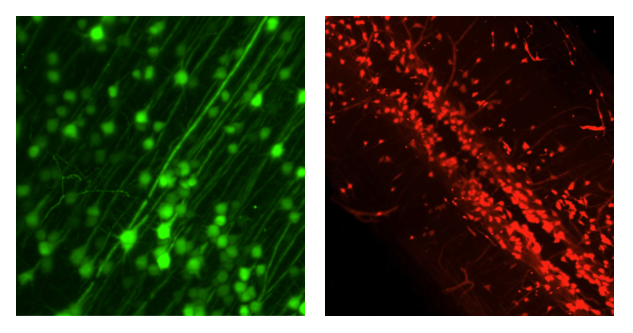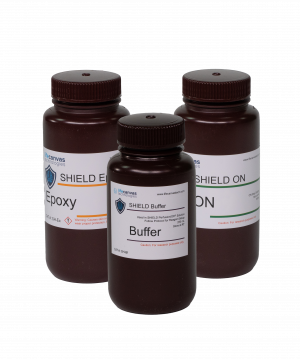Here, we demonstrate how the Megatome Premium can easily facilitate this process through whole-mount and non-destructive tissue sectioning.
Published by Park et al. in Nature Biotechnology 2018, our SHIELD reagent (AKA GE38) safeguards endogenous fluorescence, protein antigenicity, nucleic acids, and overall tissue architecture against physical and chemical stressors. The SHIELD tissue preservation method also protects tissue during fluorescent protein imaging and antibody labeling across multiple rounds.
Compatible with:

Our streamlined protocol takes just 4-6 days, without the variability of tissue embedding via hydrogel or paraffin. Reagents are non-toxic and can be easily disposed of after use.

250 mL: Preserves 25 whole mouse brains or comparably sized samples.
500 mL: Preserves 50 whole mouse brains or comparably sized samples.

Ahmadreza Attarpour, Jonas Osmann, Anthony Rinaldi, Tianbo Qi, Neeraj Lal, Shruti Patel, Matthew Rozak, Fengqing Yu, Newton Cho, Jordan Squair, JoAnne McLaurin, Misha Raffiee, Karl Deisseroth, Gregoire Courtine, Li Ye, Bojana Stefanovic & Maged Goubran
Dae Hee Yun, Young-Gyun Park, Jae Hun Cho, Lee Kamentsky, Nicholas B. Evans, Nicholas DiNapoli, Katherine Xie, Seo Woo Choi, Alexandre Albanese, Yuxuan Tian, Chang Ho Sohn, Qiangge Zhang, Minyoung E. Kim, Justin Swaney, Webster Guan, Juhyuk Park, Gabi Drummond, Heejin Choi, Luzdary Ruelas, Guoping Feng & Kwanghun Chung
Joselyn S. Soto, Chiranjivi Neupane, Muskan Kaur, Vijaya Pandey, James A. Wohlschlegel, Baljit S. Khakh
Here, we demonstrate how the Megatome Premium can easily facilitate this process through whole-mount and non-destructive tissue sectioning.
Immunohistochemistry (IHC) and 3D histology are different approaches to detecting specific proteins in biological tissue.
The SHIELD kit provides optimal tissue preservation by stabilizing molecular features & tissue architecture with flexible epoxide bonds.
Without SHIELD preservation, many tissue clearing techniques can lead to significant sample degradation and loss of biomolecular information.
For technical support reach out to our dedicated customer support team at support@lifecanvastech.com.